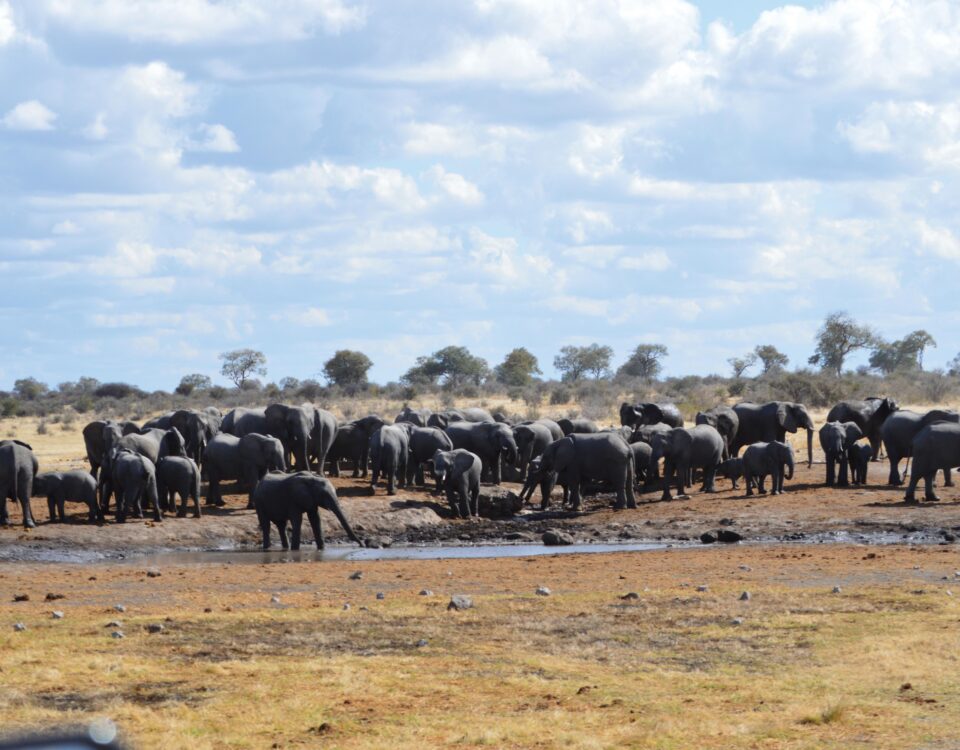World Conservation Union – The international importance of Namibian conservation areas
July 13, 2012Climate change – Could it lead to environmental collapse?
July 13, 2012By Hu Berry
Shyer than their inland cousins, brown hyaenas shuffle tirelessly along the Namibian coast, covering astounding distances as they search ceaselessly for scraps thrown up by the tide. If morsels do not suffice, they enter seal-breeding colonies, creating chaos when they hunt defenceless pups. An inveterate scavenger-hunter, often solitary, nocturnal traveller, the ‘strandwolf’ typifies the desolate nature of Namibia’s desert shore.
Parahyaena brunnea alias brown hyaena (strandwolf or strandjut in Afrikaans) first became known to science as recently as 1820. Since then it symbolises the bleak isolation of most of the Namibian coastline, where only the hardiest creatures survive. What gives this animal an edge over others of its kind? The remaining members of the hyaena family in Namibia, namely aardwolf (taken from Afrikaans and meaning literally ‘earth wolf’) and spotted hyaena are conspicuously absent from the coast.
The main diet of aardwolf is harvester termites, which do not occur on the desert coast. The aardwolf obtains most moisture from its food and rarely needs to drink. Spotted hyaenas need to supplement the moisture content of their food by drinking regularly. A telling difference that determines distribution in hyaenas is their protection against cold. Both aardwolf and spotted hyaena lack the dense coat of hair that clads brown hyaenas. This thick insulation, covering much of their body and giving them a shaggy appearance, provides them with protection. Moreover, brown hyaenas are relatively independent of drinking fresh water, obtaining most of their moisture requirements from their food.
If we were to shadow a brown hyaena to witness its 24-hour activity pattern, starting at sunrise, we would recall the following events. At daybreak a dominant male returns from his nocturnal wandering to rest beneath a rocky scree. Sheltered from the piercing southerly wind that is already stirring sand around the communal burrow, his clan uses this site as a shared meeting and denning place. The females, cubs and lower-ranking males have not meandered as far as he has, preferring to stay within their territory. Two rapidly growing cubs are being suckled by the alpha female and also fed by other adults, who bring them a mix of seal, hare and rodent remains.
The group presently numbers seven but may expand to double that. Under a clear sky the wind soars in strength, driving sand and small pebbles before it. Waves crest and foam froths onto the nearby beach as the gale gains midday strength. Hyaenas hunker down, protected from the energy of a chill windstorm by their dense coats. Towards sunset the squall subsides. Fog banks drift landward, replacing the blustering day with dank dreariness. It is time to forage. The group separates, leaving the cubs alone.
The dominant male again strikes out singly, covering distance as he begins his combined mission of foraging and demarcating his territory with clear signals. In a ritualised sequence he hunches over bushes and rocks, positioning his tail against them to extrude an anal pouch that secretes a sticky substance, which he pastes onto the surface with skilful accuracy. It contains a marvellous mix – two components, one white and strong-smelling; the other black and waning rapidly. The white constituent is detectable for several weeks, and is probably designed to proclaim an occupied territory to intruding males. The black paste dissipates quickly and may be an ingeniously evolved tactic to inform passersby about the time elapsed since marking took place.
The male’s route is erratic. Depending on the messages borne on the wind, his finely honed sense of smell directs him unerringly to locate reptiles, rodents and rotting meat. As the night deepens, the desert radiates off its daytime heat and the sea sends cold swathes of mist across the wanderer’s path. An eerie backdrop of beach and rock-strewn fjords finds the haena shuffling tirelessly along, appearing and disappearing wraithlike in the murkiness of midnight. His hunger urges him to change direction and stride when a pungent whiff of seals drifts in tantalisingly from a sheltered bay.
Ambling changes to a purposeful lope as scavenger transforms to hunter. Entering the seal colony he ignores the throaty threats of the adults and focuses on an unprotected pup. His formidable jaws close over its head, crushing the soft skull and killing instantly. He leaves as swiftly as he appeared, the baby seal dangling lifelessly from his clamped jaws. Instinctively seeking the nutritious fat and bone marrow, he speedily dismembers its carcass and feeds to repletion, leaving little for others to scavenge. With reinforcement of his territorial boundaries complete and satiated by a meal of fresh meat, the male retraces his route. As dawn looms gloomily against the night, he leaves a zig-zagging trail of close to 30 kilometres across the surface of the desert. Approaching the den in a slope-backed shuffle, his massive forepaws print distinctive pugmarks in the sand, adding a hyaena day and night to the calendar of events of the desert.
This article appeared in the 2009/10 edition of Conservation and the Environment in Namibia.
Hu Berry was a scientist, conservationist and specialist tour guide. He was one of Venture Publications' most valued authors. Sadly he passed away in July 2011. To read more about him click here.



